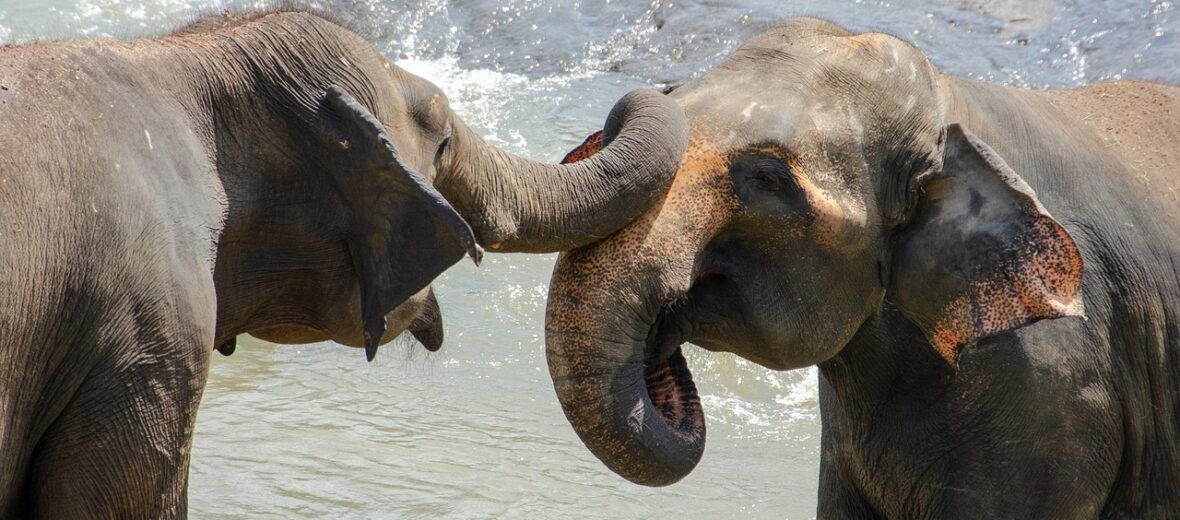
Being the second largest land animal on the planet, next to the African elephant, the Asian elephant is an intelligent giant found in Southeast Asia. These elephants prefer moist tropical rainforests, mountainous forests, dry, semi-deciduous forests, scrublands, and grasslands with plenty of access to water. Unfortunately for the conflict with humans, they can also be found near and in agricultural fields. In some Asian locales, these beasts of burden are used for carrying heavy loads and assisting humans with daily chores. Sadly, they have been reduced to merely 15% of their original range by human encroachment and illegal hunting for the ivory and tourism trades. They are listed as Endangered by the IUCN.
First the Stats…
Scientific name: Elephas maximus
Weight: Up to 8,800 lbs.
Length: Up to 21 feet
Height: Up to 9 feet
Lifespan: Up to 48 years
Now on to the Facts!
1.) There are 3 recognized subspecies of Asian elephant: the Indian, the Sumatran, and the Sri Lankan. The Indian elephant has the largest range.
2.) Female elephants have a tendency to be more social than males. Females will form groups with other female elephants, led by a matriarch.
3.) Males usually travel alone, but can be found in small herds.
4.) These elephants need up to 330 lbs. of food a day to survive.
5.) They eat a variety of grasses, roots, bark, stems, leaves, and cultivated crops like rice, bananas, and sugarcane.
But wait, there’s more on the Asian elephant!
6.) Only the males have tusks.
7.) These elephant’s trunks are made up of around 60,000 muscles!
Did you know…?
Due to their large and well developed brain, Asian elephants have been documented as being self aware. Only a handful of animals in the world possess this ability. They have been seen using tools and problem solving.
8.) Like African elephants, Asians use, in part, their large ears to cool off. Their ears have a complex network of blood vessels that, when the ears are fanned, send cooler blood to the rest of their body.
9.) They also cool themselves by lounging in water and giving themselves dust baths. The dirt acts as a sunscreen.
10.) Females give birth approximately every 4 – 5 years and have a gestation (pregnancy) of up to 22 months.
But wait, there’s still more on the Asian elephant!
11.) These elephants communicate through low-frequency calls, called infrasound, that can be detected several miles away. They will also trumpet and use body language to get messages across.
12.) Asian elephants are crepuscular (active during dawn and dusk).
Did you know…?
Elephants are known to be left or right tusked. Just like humans and primates are known for being left or right handed. Their favorite tusk will usually be worn down more than the other.
13.) All 3 subspecies have a tendency to be aggressive.
14.) They need to drink at least once a day, so they are always found near a water source.
15.) Males tend to leave their original herd once they reach puberty.
But wait, there’s still a little more on the Asian elephant!
16.) Males, even those without tusks, go into “musth” and fight for dominance, territory, and breeding rights.
17.) Elephants have the best sense of smell in the world.
Now a Short Asian Elephant Video!
Also, check out the Critter Science YouTube channel. Videos added frequently!
Want to suggest a critter for me to write about? Let me know here.



